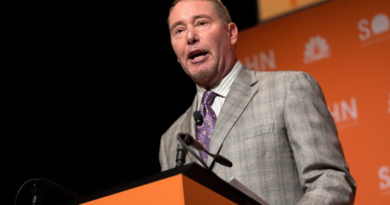Larry Summers says lower spending spells out a recession
When recession warnings hit a fever pitch last year, the only thing reassuring people like Bank of America CEO Brian Moynihan was that Americans were still spending. High U.S. consumer spending thanks to $2.5 trillion in excess savings accumulated during the pandemic has helped guard against a severe economic downturn, but that buffer is vanishing fast, and the economy could be on the verge of a recession because of it.
With inflation at risk of rising more, strong consumer spending is no guarantee, and the economy would look very different if Americans slow their purchases. That moment may be closer than you think, according to economist and former Treasury Secretary Larry Summers.
“My guess is that the overhang, the savings that consumers have accumulated, has a few more months to run, but it doesn’t have another year to run,” Summers told CNN’s Poppy Harlow in an interview Monday.
Summers said the economy could be nearing a “Wile E. Coyote moment,” a reference to the Looney Toons character with a tendency to chase an elusive Road Runner off the edge of a cliff, when it eventually realizes its mistake and starts falling.
The same thing could be happening to the U.S. economy, Summers said; it could be running off a cliff edge, and once spending runs dry, there’ll be nothing to stop it from plunging to the bottom.
“I’ve used the term: Risk of a Wile E. Coyote moment to refer to the fact that the economy could hit an air pocket in a few months,” he said.
The economy’s buffer
For months, Summers has been largely pessimistic on the U.S. economy’s chances of avoiding a recession. Even when notable economists including Nobel Prize-winning Paul Krugman pointed to positive inflation data as reason to believe a soft landing was possible if not likely, Summers still warned that a recession was “more likely than not.”
Economists had good reasons to be optimistic in the last few months of 2022, and high consumer spending was a big part of that. Spending has been floating along at steady levels for months now despite rising inflation. Households spent large amounts on goods in the early days of the pandemic, but saved even more due to lockdowns on distancing restrictions. Spending hit new heights in recent months, increasing 1.8% in January according to the Commerce Department. It’s helped by the fact that Americans are finally spending money on services again, most people who want a job have one, and wages are rising.
But that doesn’t mean spending will stay strong forever. The main source of Americans’ profligacy, their pandemic savings, may have started running dry months ago.
The share of after-tax income Americans put into their savings accounts dropped from 8.4% in December 2021 to 6.2% in March 2022, according to Northwestern Mutual. In December, Americans’ personal savings rate dropped to near its all-time low.
In July, Moody’s Analytics chief economist Mark Zandi predicted that savings for low-income Americans could start running out within six months, with wealthier households not far behind. That timeline has now passed, and many Americans may have already exhausted most of their savings, as the number of credit cardholders with credit card debt is now 46%, up from 39% a year ago, Ted Rossman, senior industry analyst at Bankrate, told Fortune last month.
Since consumer spending accounts for around 70% of U.S. GDP, it all adds up to a thinner buffer zone for Americans to avoid a slowdown in economic growth and a recession. But with inflation proving more stubborn to bring down than some economists predicted only a few months ago, consumer spending may be drying up at the worst possible time.
“I don’t think there’s any question Poppy that we do not yet have inflation on a secure glide path anyway near down to the 2% level,” Summers told CNN. He added that until the Federal Reserve is confident inflation is on a stable path to normalcy, interest rates will keep rising, making borrowing more expensive and potentially pushing consumers to save rather than spend.
“My guess is that the process of bringing down inflation will bring on a recession at some stage as it almost always has in the past,” Summers said. “Between the risk of inflation and the risk of some kind of air pocket, the Fed is trying to walk along a very, very narrow ledge and it’s not a very easy situation.”
Fortune‘s CFO Daily newsletter is the must-read analysis every finance professional needs to get ahead. Sign up today.




